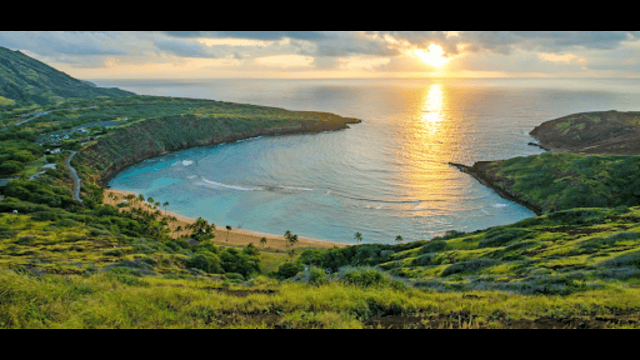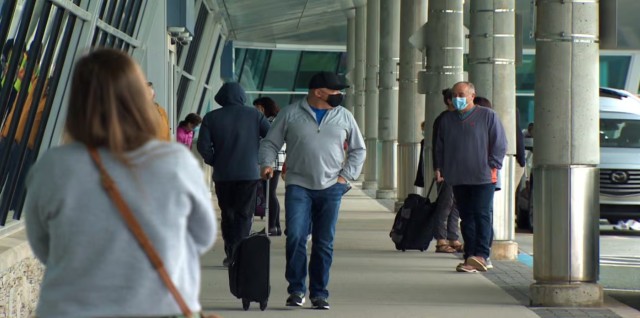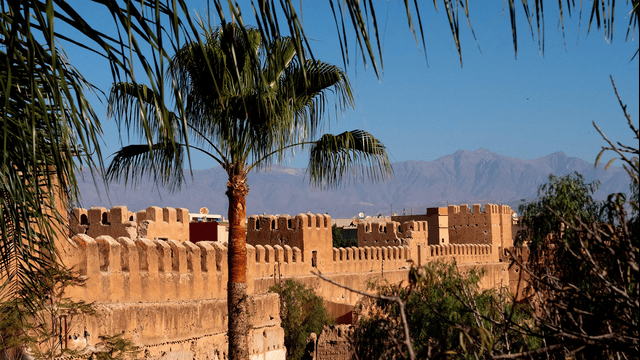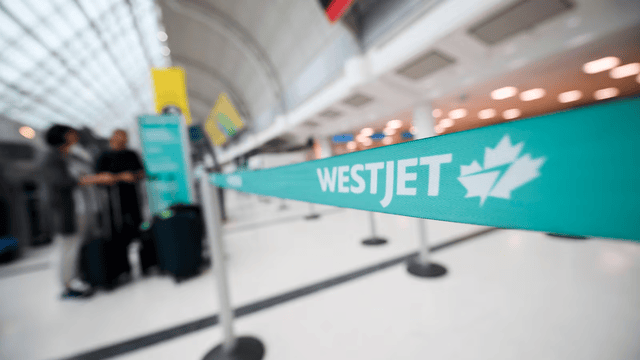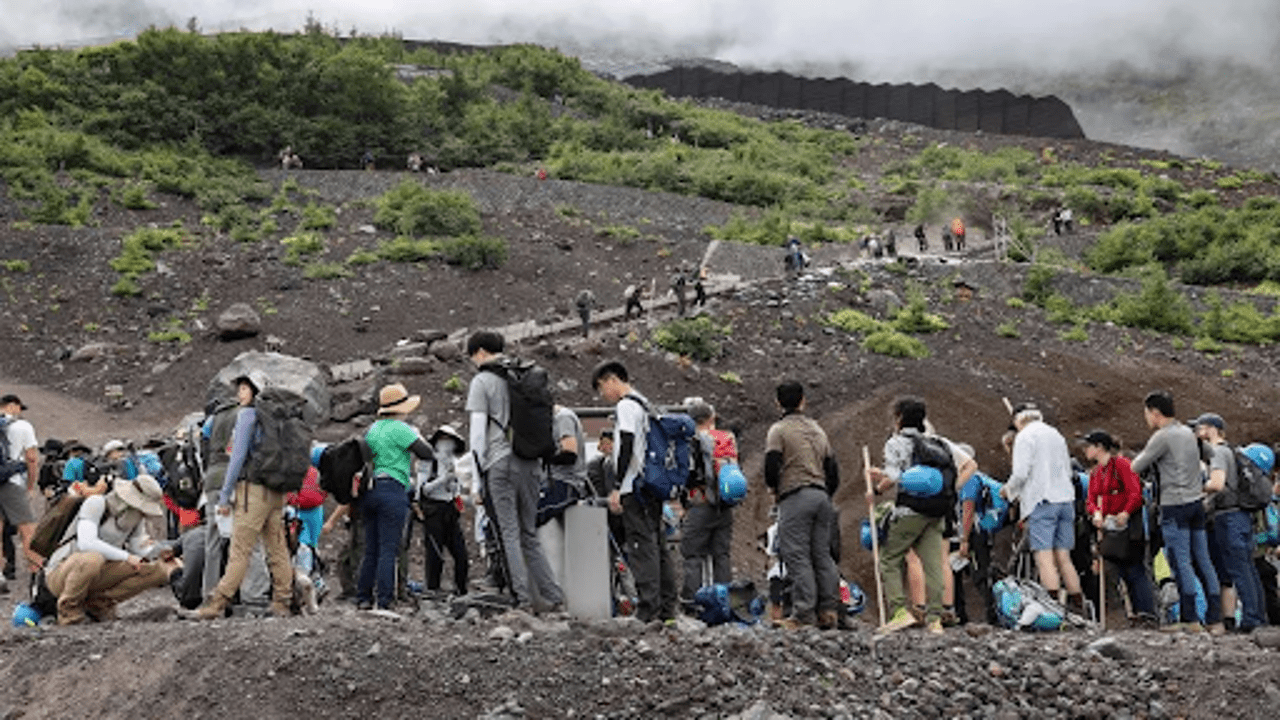
In this 2023 image, a large group of tourists starts their climb up Mount Fuji. - Photo by Mathiad Cena/AFP/Getty Images
Mount Fuji, an esteemed UNESCO World Heritage site and a symbol of Japan, has implemented new regulations for climbers due to concerns over excessive crowds.
Starting July 1, climbers will be required to pay a fee of 2,000 yen ($12.40) per person, with a daily limit of 4,000 climbers. These measures are aimed at safeguarding the mountain’s natural beauty and cultural significance for future generations, as emphasized by Koutaro Nagasaki, governor of Yamanashi Prefecture, during the announcement earlier this year.
Nagasaki also highlighted the importance of respecting the traditional mountain climbing practices rooted in Fuji-ko and Oshi culture, integral to the mountain’s historical and religious heritage.
Issues such as traffic jams, littered foothills, and poorly dressed climbers, some even attempting the ascent in sandals, have plagued this iconic Japanese destination.
To address these concerns, new safety guides will monitor the trails, ensuring climbers adhere to proper etiquette. This includes discouraging behaviors like sleeping on the trail, starting fires, or wearing inappropriate clothing.
According to Yamanashi Prefecture data, Mount Fuji saw a staggering increase in visitors, with five million people hiking the mountain in 2019, up from two million in 2012. This surge has exacerbated problems like littering, increased CO2 emissions, and reckless hiker behavior, all stemming from overtourism.
In response to these challenges, volunteers and officials have advocated for sustainable tourism practices. For instance, Tomoyo Takahashi proposed a voluntary contribution of 1,000 yen ($6.20) per visitor to support mountain maintenance efforts. However, the move towards mandatory fees, now realized, aims to ensure that only those who value Mount Fuji’s heritage visit.
It’s important to note that these regulations are currently applicable only in Yamanashi Prefecture, home to the mountain’s popular hiking trails. In contrast, neighboring Shizuoka Prefecture has yet to impose similar measures or visitor limits. Governor Nagasaki has indicated plans to collaborate with Shizuoka’s governor after the climbing season to harmonize their approaches.
Japan has faced broader tourism challenges, particularly exacerbated post-pandemic reopening. In Kyoto’s Gion district, for instance, concerns have been raised over tourists’ treatment of geisha, with some locals deeming visitors as ‘geisha paparazzi’. Despite efforts like signage and guidelines, locals suggest that more stringent measures, possibly fines or tickets, may be necessary to curb inappropriate behavior.
Similarly, Hatsukaichi, in Hiroshima Prefecture, has grappled with preserving its ancient Shinto complex, notably the iconic floating torii gate. In October 2023, the town introduced a modest tourist tax of 100 yen (62 cents) per visitor to fund upkeep and infrastructure maintenance at the site.


